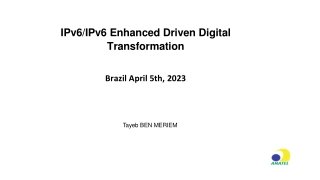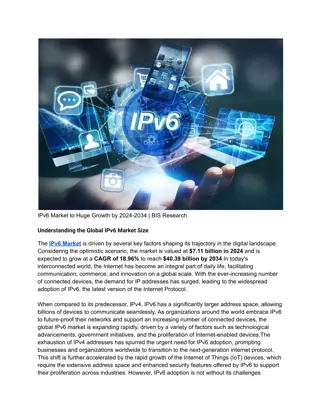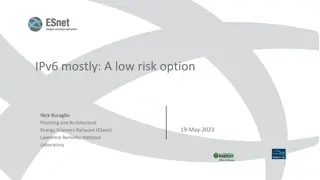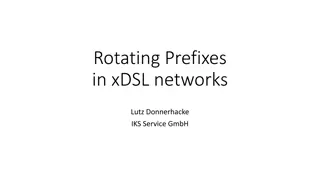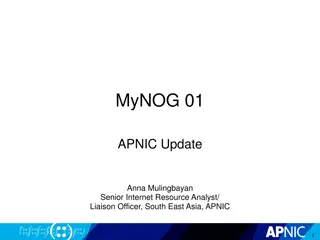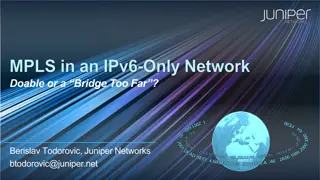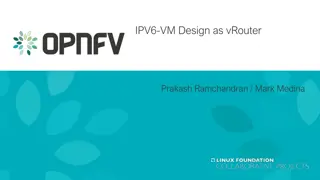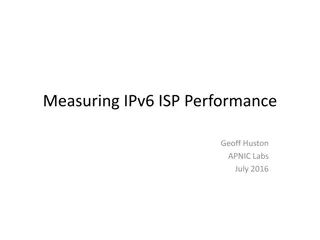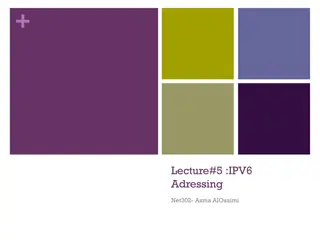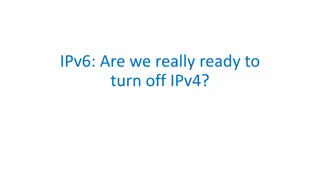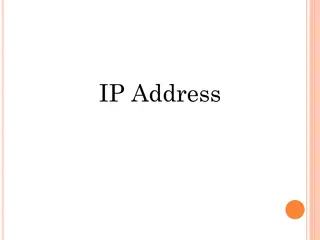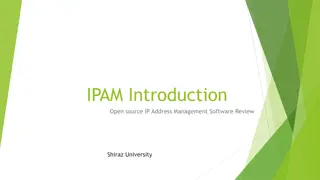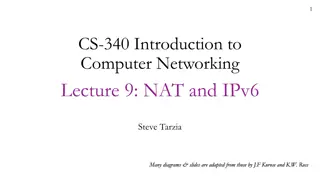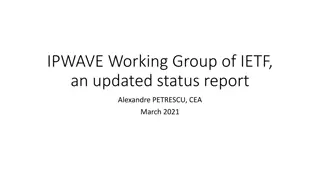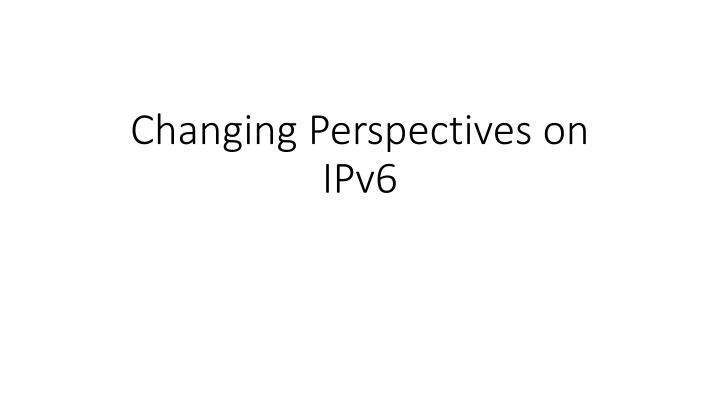
Perspectives on the Evolution of IPv6
Discover the evolution of IPv6 from the need for a new protocol due to IPv4 exhaustion to the challenges of transitioning and co-existing with IPv4. Explore the enhancements and drawbacks of IPv6, including tunneling issues and the management of dual-stack hosts. Dive into the complexities of multi-addressing and site multi-homing in the IPv6 era.
Download Presentation

Please find below an Image/Link to download the presentation.
The content on the website is provided AS IS for your information and personal use only. It may not be sold, licensed, or shared on other websites without obtaining consent from the author. If you encounter any issues during the download, it is possible that the publisher has removed the file from their server.
You are allowed to download the files provided on this website for personal or commercial use, subject to the condition that they are used lawfully. All files are the property of their respective owners.
The content on the website is provided AS IS for your information and personal use only. It may not be sold, licensed, or shared on other websites without obtaining consent from the author.
E N D
Presentation Transcript
The Exhaustion Risk Running out of IPv4 addresses was predicted to be as catastrophic as running out of telephone numbers No more numbers, no more new users of the network If the network cannot grow, then it dies We can t let IPv4 run down to the last IPv4 address We need to design, build and deploy a new IP protocol before we get down to the last IPv4 address That was the thinking in 1990 or so when the IETF grappled with the news of imminent address failure in IPv4
Enter IPv6 IPv6 was intended to be the minimal change approach Keep most of IPv4 intact, but just recompile the protocol stack with 128 bit addresses But This time we were not building in a greenfield location we had to build in a space that was already populated with IPv4. We had to think about co- existence and transition as well. We could not resist the temptation to address some of the niggling issues with the IPv4 design And none of us were economists we never looked at the acceptance of IPv6 in business and economic terms it was just a technical question and only a technical question
IPv6 was as not perfect And some aspects were clearly inferior to IPv4 at the time
Tunnelling - IPv6 over IPv4 The common IPv4 substrate
Tunnelling - IPv6 over IPv6 Issues with managing MTU Issues with manual configuration of network-to-network tunnels Issues with auto-brokered tunnels (6to4) Issues with IPv4 and NAT traversal (Teredo) Despite the best of intentions tunnels were fragile and a significant performance hit
Dual Stack Hosts How does the host protocol stack manage transparent connectivity when the host has IPv4 and IPv6? Try IPv6 and if the connect attempt fails then retry using IPv4? Try both at once at the same time and work with the first to complete Try IPv6 and then try IPv4 soon afterward
Multi-Addressing and Site Multi-homing How do IPv6 hosts select the right source address when the host has multiple IPv6 addresses on the same interface? How can a site use provider-based prefixes from multiple providers and use the right interface to the right provider (the SHIM6 problem)
IPv6 MTU handling and ICMPv6 Filtering Packet size mismatch requires the router to signal the source of the problem via ICMPv6 message But many networks filter ICMP messages as a security practice Which results in black holes where
So the Industry was not confident about IPv6 Remaining with IPv4 and increasing the use of NATs was a comfortable approach that did not stress out the support capabilities of the platform providers, access providers and service providers IPv6 ran the risk of creating additional operational fragility into the service environment that operators and support structures were ill- equipped to manage Better to just wait
How could we demonstrate that IPv6 was viable? By performing an objective measurement that showed the level of IPv6 adoption across the entire Internet all of the time, and at a level of granularity that showed the level of IPv6 support within each network
Where now? Great question!
Where now? Nobody knows But its clear that the Internet has changed a lot in the past decade or two Most network transactions are streamed from nearby datacentres There is little transit left, little in the way of routing, little residual need even for a global common network we ve taken the core of the network and passed it over to the interior of the CDNs If all the consumer money is used for accessing content relative to nearby datacentres then who pays for global transit? Who pays for routing? Who pays for a globally unique address system? Are we still building one network? Or many dedicated content-centric networks? Where does this leave IPv6?

